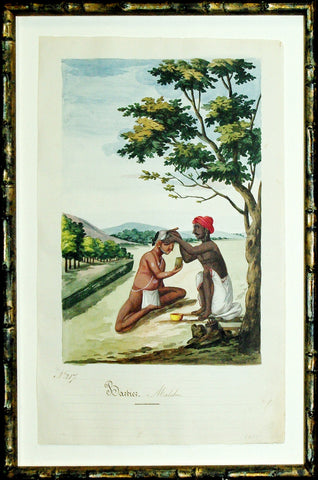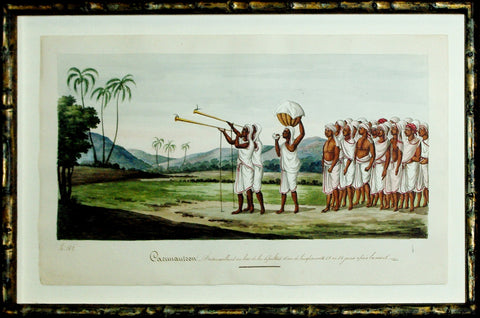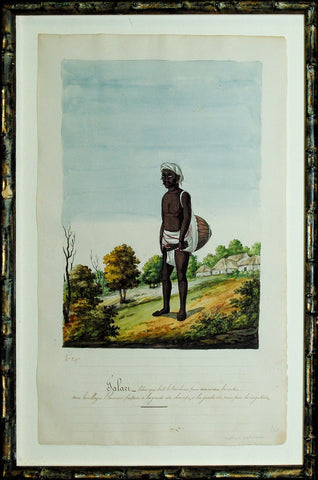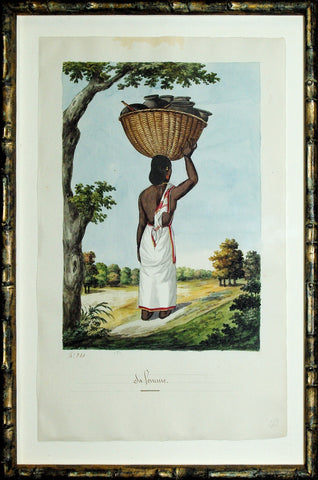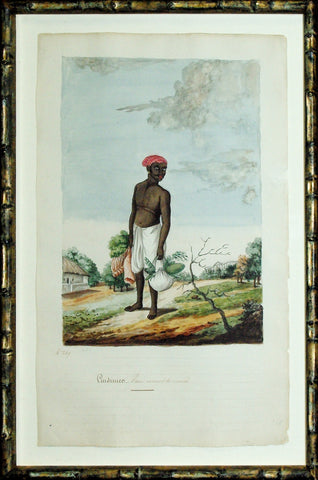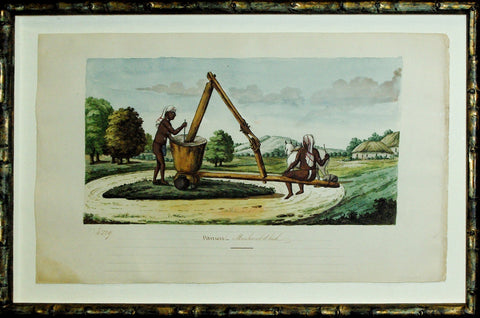
Indian Trade Watercolor
Indian Trade
Watercolor on paper
1818-1828
Captioned in French
Paper size approx. 12 x 19”, Frame size: 22 x 14 5/8”
These remarkable trade watercolors were produced for the French trade in India between 1818 and 1828. Because British colonial domination of India was so enduring, it often goes unremarked that the French had their own aspirations to political dominance in this highly profitable part of the world. In 1664, a French entrepreneur named Jean-Baptiste Colbert had started the French East India Company (Compagnie des Indes Orientales). For a period in the early eighteenth century, profits posted by the French company actually surpassed those of the British East India Company. During the period that this map was made, however, the French had already lost ground to the British in India. The Seven Years' War (1756-1763) resulted in the defeat of the French forces and limited French imperial ambitions. By the Treaty of Paris (1763), the French were forced to maintain their trade posts only in small enclaves in Pondicherry, Mahe, Karikal, Yanam, and Chandernagar without any military presence. It is very likely that one of these cities is where these vivid paintings were produced.
Watercolor on paper
1818-1828
Captioned in French
Paper size approx. 12 x 19”, Frame size: 22 x 14 5/8”
These remarkable trade watercolors were produced for the French trade in India between 1818 and 1828. Because British colonial domination of India was so enduring, it often goes unremarked that the French had their own aspirations to political dominance in this highly profitable part of the world. In 1664, a French entrepreneur named Jean-Baptiste Colbert had started the French East India Company (Compagnie des Indes Orientales). For a period in the early eighteenth century, profits posted by the French company actually surpassed those of the British East India Company. During the period that this map was made, however, the French had already lost ground to the British in India. The Seven Years' War (1756-1763) resulted in the defeat of the French forces and limited French imperial ambitions. By the Treaty of Paris (1763), the French were forced to maintain their trade posts only in small enclaves in Pondicherry, Mahe, Karikal, Yanam, and Chandernagar without any military presence. It is very likely that one of these cities is where these vivid paintings were produced.
We Also Recommend

